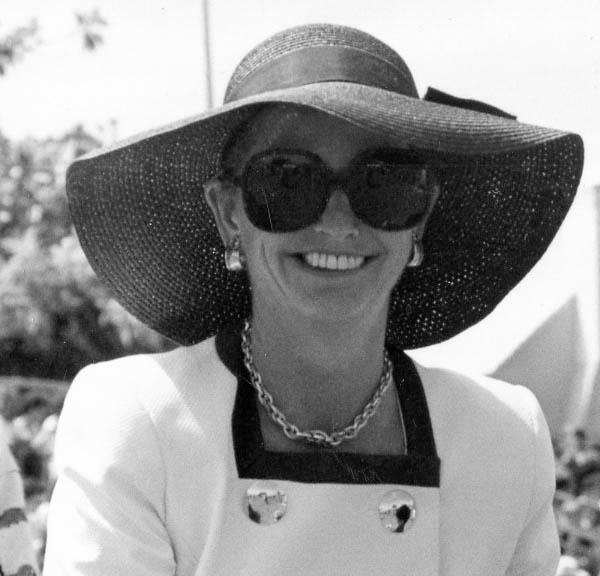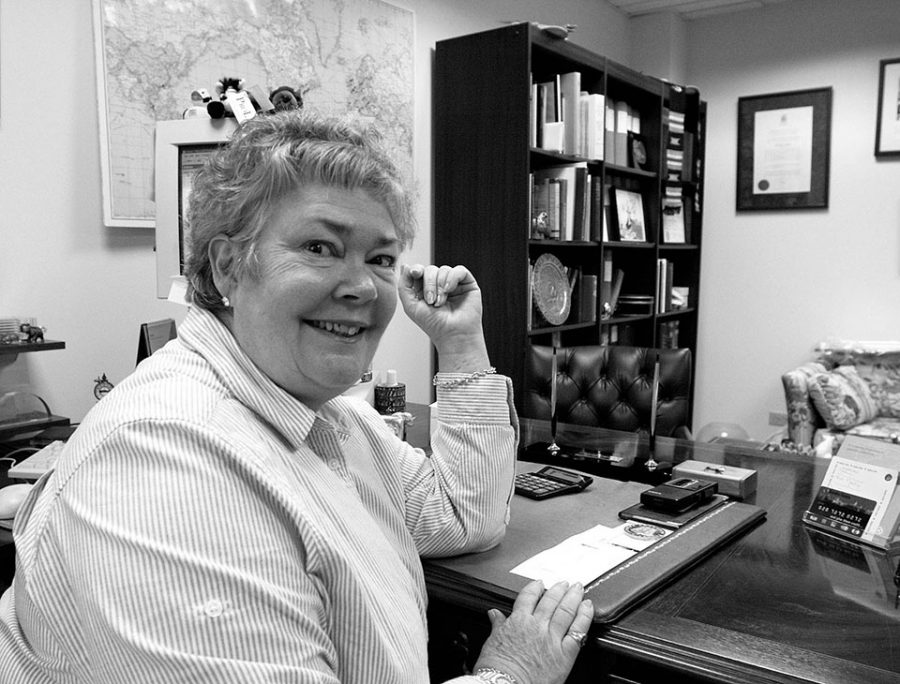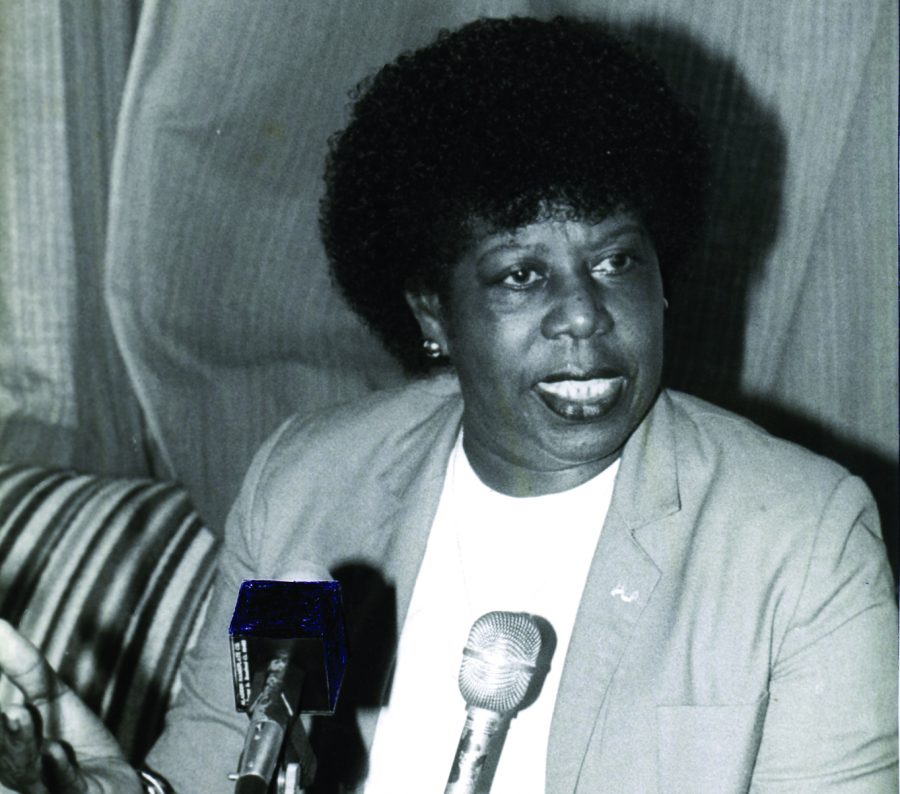Trailblazers in Bermuda Law
by Julie McLean
2019 marks the centenary in the UK of the 1919 Sex Disqualification (Removal) Act, which allowed women to enter the legal profession. Julie McLean, a director and board member of Conyers Dill & Pearman, takes a timely look back at the story of women in Bermuda’s legal sector and the progress to equality in her own firm.
The history of women lawyers in Bermuda begins with an exceptional pioneer – Lois Browne-Evans (later Dame Lois). In 1953, some 30 years after the first female lawyer in the UK, she was the first woman to be called to the Bermuda bar. As a young, black woman barrister in a profession dominated by white men, she was a trailblazer who in her long career went on to break down other professional barriers, including becoming the first female Attorney General in Bermuda in1998.

Following in Lois Browne-Evans footsteps, though over a decade later, were Ann Cartwright DeCouto and Shirley Simmons. As the only three women practising law in Bermuda in the 1960s, they were close friends and known as the “Three Musketeers”.

Other pioneers in the island’s legal profession include Dianna Kempe and Norma Wade-Miller. Dianna Kempe was admitted to the Bermuda Bar in 1973 and went on to become Senior Partner of Appleby, Spurling & Kempe (now Appleby). She was the first female lawyer to become Queen’s Council (QC) in Bermuda in 2000 as well as the first woman to be elected President of the International Bar Association. In 2006 she was the third recipient of the Outstanding World Woman Lawyers of the Year Award. Norma Wade-Miller was the first female magistrate in Bermuda, the first female Judge of the High Court, Justice of the Supreme Court of Bermuda and Acting Chief Justice in Bermuda. Her service to the island’s legal community and judiciary was honoured with an OBE in 2016.
While the percentage of women called to the bar in Bermuda averaged less than 10 per cent in the 1960s and 1970s, the feminist movement of those decades began to bear fruit, with that figure creeping up to roughly 20 per cent in the ‘80s and 40 per cent in the ‘90s. Since the turn of the millennium, on average more women than men have been called to Bar (around 55 per cent) reflecting the equality now present between men and women in terms of access to a legal education and entering the legal profession.
There still tends to be a gap between the numbers of men and women at the director/partnership level.
However, the picture is less rosy when it comes to equality between the sexes in the higher ranks of the profession. In common with firms in the UK, the US and Canada, there still tends to be a gap between the numbers of men and women at the director/partnership level. This can be partly explained by the time it takes to progress to partnership – if fewer women were entering the profession in the ‘80s and ‘90s, fewer would be in partnership positions today. Nonetheless, there are other factors at play too, resulting in higher attrition of women than men from the profession. Most notable is the greater challenge faced by women in balancing career and family, due to the continued expectation that mothers will play the primary role as care-giver. Millennials onwards tend to have a more open view of traditional roles, so as men take on more responsibility at home, balancing will become easier for women.
Recognising that there is still some way to go to ensure equal opportunity for progression to all levels, women in the profession have come together in Bermuda to assist each other. The Women’s Legal Network was founded in 2015 by Kimberley D. Caines-Best and Lovette Tannock. “We wanted to provide a space for women in law to support one another. Over the past few years we have organised a number of networking, educational and philanthropic events which have been very well attended and received,” said Kimberley Caines-Best.
Young women entering the legal profession today not only benefit from having had barriers broken by those who went before, but today often have the advantage of mentorship and support from female and male colleagues as they progress through their careers. This bodes well for a future where gender imbalance in the profession, at all levels, will eventually be a thing of the past.
Gender Diversity at Conyers
Bermuda’s largest law firm, Conyers Dill & Pearman, has come a very long way in terms of gender equality, particularly in recent years.
More than three-quarters of the firm’s Bermuda employees are women, and when it comes to global management roles and department heads, women are well represented – for example, the Chief Financial Officer, Global Head of Client Services, Head of Trust Services, Head of Corporate Services, Global Head of Human Resources and Chief Marketing Officer are all women.
Lisa Marshall, who joined in 1988, was the firm’s first female lawyer, soon followed by Robin Mayor. Lisa went on to become the firm’s first female partner in 1991; Robin was also promoted to partner the following year.
Conyers now has 22 female lawyers in Bermuda representing around 45 per cent of the total. At the director level, only 27 per cent are female, but this number is steadily rising and is higher than most onshore law firms. Lisa Spencer-Arscott, Global Head of Human Resources for Conyers, acknowledges the imbalance at the top, but points out that the numbers of men and women promoted to director in recent years have been equal. “When you look at the numbers of women associates in the firm (66 per cent), it is clear that in time we will see a much more equal representation of gender at the director level. It will just take a few more years,” she said.
The firm has worked hard to attract female lawyers and at least half of applicants to the summer law program – a primary vehicle for sourcing new associate hires – are now women. Equally important is retaining that talent, by fostering a culture in which women feel valued and get the experience they need to succeed. A women’s networking group has been set up by some of the firm’s female leaders to champion the professional developmentand career advancement of women through such means as sponsorship by senior leaders, mentoring and peer networking. “The group will also draw on expertise and insights from our peer groups of influential male leaders to help support our objectives, step up beside women and drive the adoption of actions across the firm,” said Lisa Spencer-Arscott.
Unconscious bias training was also delivered throughout the firm last year, with the aim of improving awareness of implicit biases – including gender and racial prejudices – that can hinder success and inclusion.
Julie McLean is a Director and local Head of Aviation Finance at Conyers Dill & Pearman.
This article was originally featured in the February 2019 edition of the RG Business Magazine.

